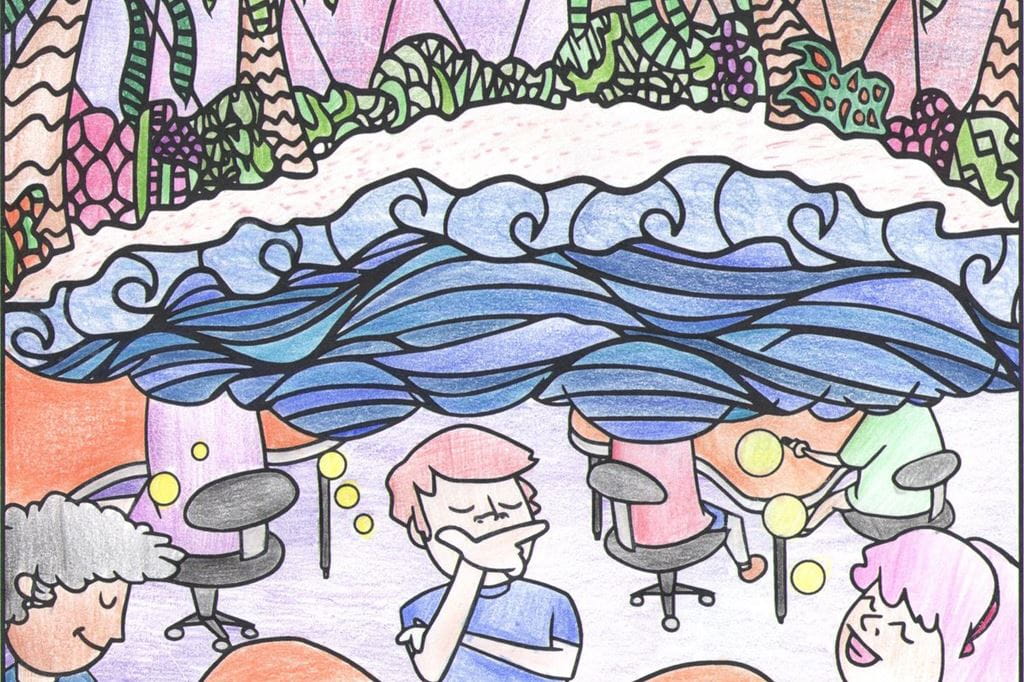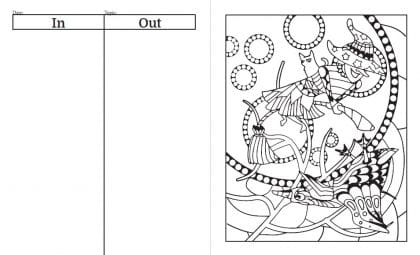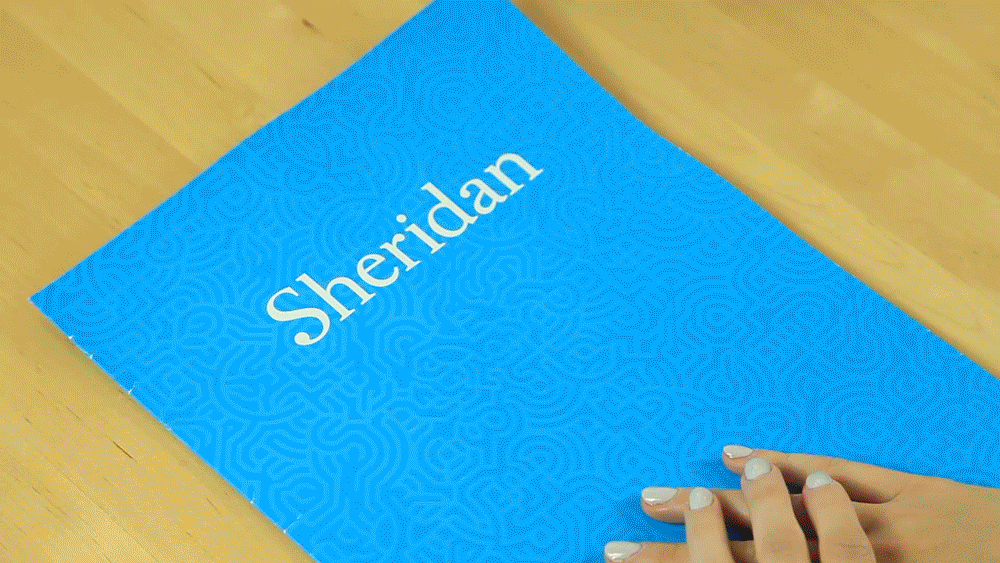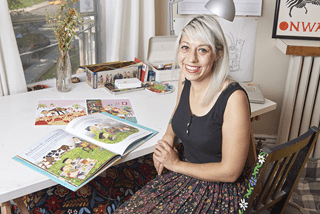
Adding some colour to the in-class experience
 by Keiko Kataoka – Sep 12, 2016
by Keiko Kataoka – Sep 12, 2016 Collaboration and participation are important elements of Professor Brandon McFarlane’s classes in Creativity and Creative Studies at Sheridan so after observing some of his students doodling in their notebooks, he was initially concerned they were distracted. But his interest piqued when he realized those students were still taking notes and amongst the highest academic performers in his classes. He began to wonder if doodling, and perhaps colouring, which has become more popular with adults in recent years, may be beneficial in-class activities to improve mindfulness. To research this connection he launched the Creative Colouring Project.
“If you are mindful, you are focused on and present in a task and the creative output that can result is heightened,” McFarlane explains. “Research shows a connection between mindfulness and creativity but there’s no research on how colouring contributes to mindfulness. We make that analogy but I want to be able to justify it.” If a connection can be validated, then colouring in a post-secondary setting – particularly at Sheridan, where creativity is our cornerstone – could have great pedagogical potential says McFarlane.
“Research shows a connection between mindfulness and creativity but there’s no research on how colouring contributes to mindfulness. We make that analogy but I want to be able to justify it.”
– Brandon McFarlane
Through Sheridan’s Co-Curricular Record (CCR) program McFarlane recruited student artists and research assistants to create colouring templates and help design the underlying research approach for the project. The templates were first introduced in his creativity courses as an optional activity on the back of printed agendas. “There’s a no electronics policy in these classes given the level of peer-to-peer interaction required,” he says. “But when I say ‘here’s something you can colour’ even the students who are at first uncertain can’t help themselves.”

Bachelor of Illustration and creativity student Kristine Villenevue is a proponent of colouring and enthusiastically helped with designing templates. “I do a lot of drawing as an illustrator but colouring in the lines made by someone else is relaxing. There’s no pressure to make it look good,” she says. The templates she creates are intricate and abstract so as to discourage preconceived notions of colour. She explains: “I find this helps with the relaxation part – there’s no right or wrong way to colour it in.
Under McFarlane’s guidance the CCR students applied creative problem solving strategies and skills to assist in the development of a methodology to measure the impact of using colouring books in the classroom. In its first iteration, feedback was collected in a survey from approximately 60 students who used the templates while taking notes in class. More than 80% of those surveyed indicated they enjoyed colouring and felt that it enhanced their in-class experience and notetaking.
“I do a lot of drawing as an illustrator but colouring in the lines made by someone else is relaxing. There’s no pressure to make it look good.”
– Kristine Villeneuve
In its second iteration, a group of 60 students will colour for one hour and take the Alternative Uses test to measures divergent thinking – a thought process used to generate creative ideas by exploring many solutions. This specific test requires the participant to record alternative uses for a paper clip. A baseline group of the same size will complete the test without colouring beforehand and responses from both will be evaluated in four sub-categories for creativity. McFarlane predicts that the latter group won’t score as high.
To ensure the integrity of the methodology, all students will be asked to first self-evaluate using the Kentucky Inventory of Mindfulness. “This will help correct the data in case some of the students participating are more mindful by luck,” says McFarlane. “At the same time it will also provide an opportunity to reaffirm the notion that mindfulness is in fact connected to creativity.”

The Creative Colouring Project is being partially funded by a Sheridan Scholarship, Research and Creative Activities (SRCA) grant. The grant has allowed McFarlane to purchase the licensing fees for the tests, pay his research assistants and buy supplies. “Having that institutional support is significant,” he says. “It shows that Sheridan values the type of research that aims to improve the classroom environment and contributes to teaching excellence.”
Research will start at the beginning of the fall 2016 semester with students in his creativity classes. “We are going to try to do this as early as possible so that any creativity training in which students partake in as part of their studies doesn’t skew results,” he explains. McFarlane hopes to analyze data in early 2017 and eventually share conclusions with his peers at the Sheridan Scholars and Creators Conference and external Humanities and Social Sciences conferences. At a later time, he’d like to re-test students from different institutions to determine if a “Sheridan factor” influenced the results.
“Having that institutional support is significant. It shows that Sheridan values the type of research that aims to improve the classroom environment and contributes to teaching excellence.”
– Brandon McFarlane
What’s available now from the project is The Sheridan Notebook – a free, downloadable colouring book housed on Sheridan’s Scholarly Output Undergraduate Research Creative Excellence (SOURCE) repository. The book was authored by McFarlane with the design support of Villeneueve and Bachelor of Game Design student Devin Murray. The publicly-available book features original templates and outlines of photos taken at popular spots on campus.
“It would be great to see people on campus walking around with their Sheridan colouring books,” says McFarlane. “But the ultimate goal is to have a tool that can be easily integrated into the classroom that can help students be more mindful and creative, with some research to back it up. I want my students to be interested in doing the best work possible and I think colouring can be a beneficial strategy to nurture those life skills.”
Pictured at top of page: A coloured-in template from The Sheridan Notebook
Written by: Keiko Kataoka, Manager, Communications and Public Relations at Sheridan.
Media Contact
For media inquiries, contact Sheridan’s Communications and Public Relations team.



